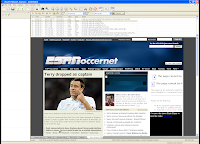I have demonstrated password reset and cracking of Windows passwords
before. I won't even bother demonstrating resetting of Mac OS X passwords because it is so trivial. Lame Apple ships a password reset utility with their Mac OS X installer DVD. DUH!!!
Kon-Boot is a powerful
tool that gives you root privileges on Linux and administrator rights on Windows without needing to crack or know the admin password.
In my demo, I burnt Kon-Boot as a bootable disc and booted up my Linux system with it. Kon-Boot modifies my Linux kernel and permits me to gain root access just by entering "kon-usr". I run the "whoami" command to prove that I am logged in as root without entering the root password.
The high res version of this demo can be downloaded here.
 Upgrading to a new kernel version is necessary from a security perspective but it inevitably introduces a new entry in Grub. You can remove those redundant entries by:
Upgrading to a new kernel version is necessary from a security perspective but it inevitably introduces a new entry in Grub. You can remove those redundant entries by:



















